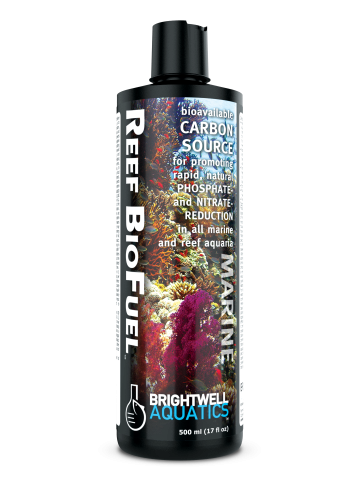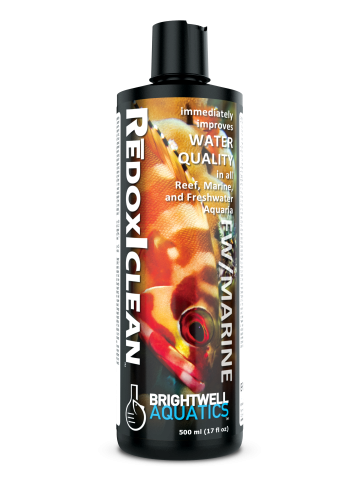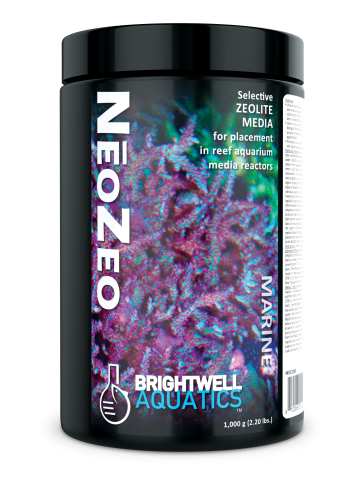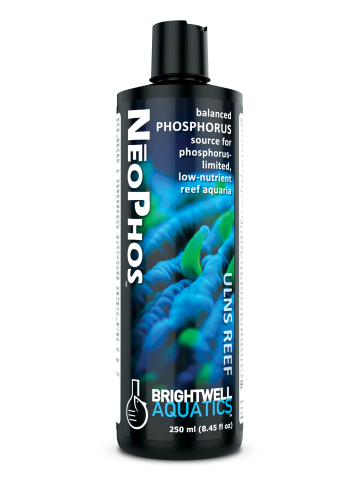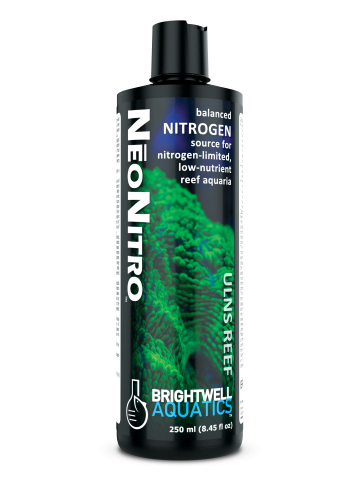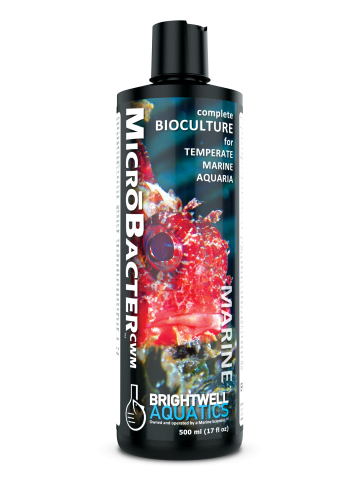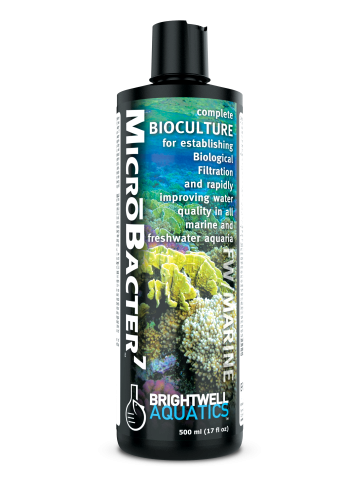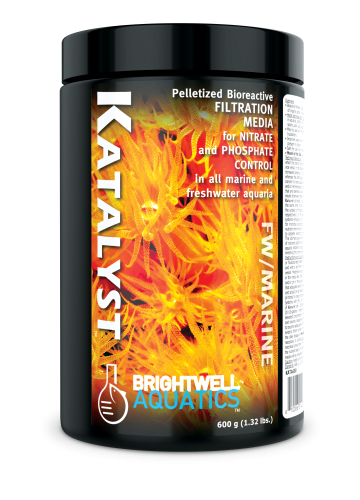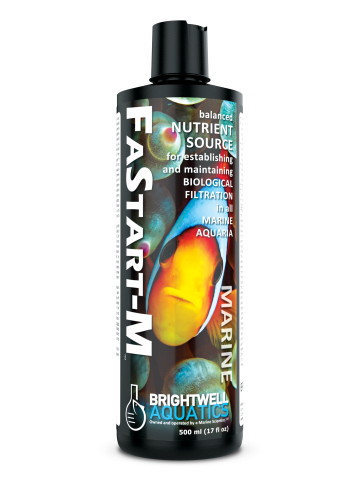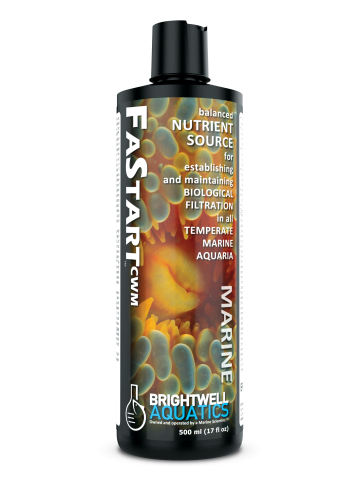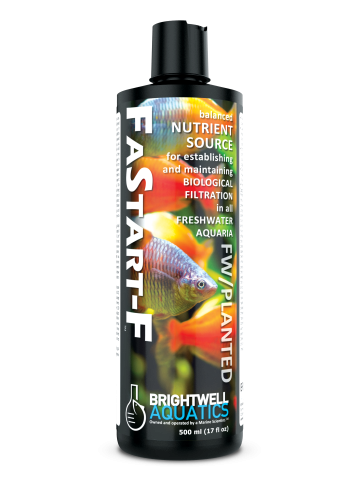BioFuel CWM
Bioavailable carbon source for natural phosphate and nitrate reduction in temperate marine aquaria
Overview
- Formulated specifically for temperate (“cold water”) marine aquaria.
- Combines multiple non-sugar, non-alcohol organic carbon sources shown to significantly stimulate cell respiration for enhanced nutrient uptake by microbes present in system, resulting in natural depletion of nitrate and phosphate.
- Completely safe and biologically-sound, non-flammable alternative to using vodka or ethanol. Not aldehyde-based.
- Indirectly benefits corals and other suspension-feeding invertebrates by encouraging reproduction of bacterioplankton (an important food source for those organisms).
- Encourages polyp-expansion in corals, anemones, and their allies.
- Formulated by a marine scientist.
Sizes
- 250 ml
- 500 ml
- 2 l
- 20 l
Technical Background
The concept of biological filtration is simply to utilize living organisms to remove substances from aquatic systems as a natural result of their respiration and metabolic processes. This mode of filtration is at work in any aquarium system housing live organisms, though microbes (e.g. various types of bacteria) are arguably responsible for the majority of nutrient-remineralization that takes place; oceanographic studies have shown that up to 90% of the dissolved organic carbon present in seawater may be assimilated by planktonic bacteria (bacterioplankton) into new biomass. This nutrient assimilation simultaneously removes nitrogen (as ammonia, nitrite, and nitrate) and phosphorus (as phosphate) from the water, making bacterioplankton a very effective sink of dissolved organic material that would otherwise fuel the growth of organisms such as cyanobacteria and filamentous algae in aquaria. The entire process requires that adequate carbon be present in a usable form. In aquaria with a tendency towards elevated phosphate and nitrate concentrations, an appropriate source of carbon may quickly become depleted. BioFuelCWM provides multiple sources of bioavailable carbon to ensure that nutrient remineralization is efficient and effective; it is specifically formulated for use in temperate marine aquaria, where nutrient densities are often high due to feeding requirements. The resulting increase in microbial biomass benefits suspension-feeding invertebrates such as corals, clams, tube worms, tunicates, sponges, and their respective allies. In this fashion, good water quality is maintained, a food source is provided to many aquarium inhabitants, and a large percentage of the assimilated nutrients are directly removed from the system (via protein skimming).
Instructions and Guidelines
Shake product well before each use. Maximum nutrient uptake potential will be realized when using BioFuelCWM in conjunction with MicrōBacterCWM. Temperate marine aquaria employing effective protein skimming will achieve maximum rate of nutrient export via extraction of bacterioplankton biomass, as opposed to systems that are not skimmed.
Grossly overdosing BioFuelCWM will not significantly increase the effectiveness of the product, nor the rate at which it enacts changes in aquaria; in fact, it may have a deleterious effect on water quality if not used as directed. The following recommendations are based upon extensive testing, and will produce the best results in most aquaria; dosage will require adjustment according to perceived benefit and rate of nutrient input to aquarium.
Do not attempt to maintain an aquarium containing zooxanthellate organisms completely free of detectable nitrate and phosphate; doing so is highly likely to result in loss of life of those organisms. Maintain nitrate and phosphate within a range of 3 – 5 ppm and 0.01 – 0.03 ppm, respectively.
Medium- to High-nutrient Systems: Add 5 ml (1 capful on 250- and 500-ml bottles; 1/2-capful on 2L bottle) per 50 US-gallons (189.3 L) of aquarium water daily. Monitor concentrations of phosphate and nitrate with accurate test kits; phosphate and nitrate will gradually decrease when the rate of nutrient assimilation overtakes the rate of nutrient input and has successfully processed the initial latent organic material in the aquarium. Thereafter, switch to maintenance dosage (below).
General maintenance dosing: Daily dosing will encourage the most stable concentration of available nutrients in any aquarium system. Add 5 ml (1 capful on 250- and 500-ml bottles; 1/2-capful on 2L bottle) per 100 US-gallons (378.5 L) of aquarium water daily. With time, aquarist may determine that decreasing the dosage and/or dosing frequency by up to 50% sufficiently maintains a low-nutrient environment. During changes in biological filtration or when increasing the aquarium bioload, dose 1 drop per 50 US-gallons daily for one week, then resume maintenance dosage. Caution: Keep out of reach of children. Not for human consumption.
Ingredients
Purified water, proprietary blend of ACS-grade organic carbon sources.
